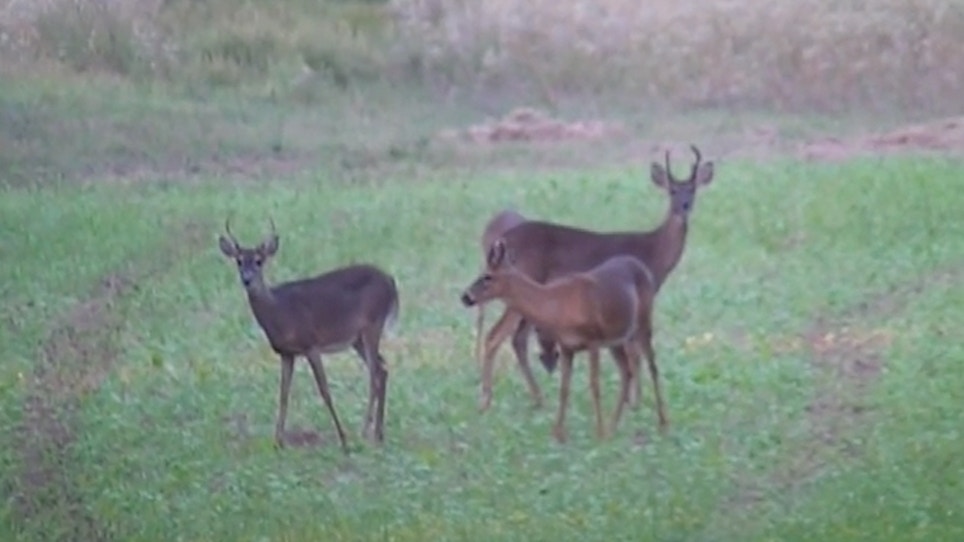By ED GODFREY | The Oklahoman
OKLAHOMA CITY (AP) — These are the heydays of deer hunting in Oklahoma.
There was a time in Oklahoma when it was rare for someone to kill a buck, and the greatest sin a deer hunter could commit was to shoot a doe.
Now, as a general rule, hunters can't shoot enough does and we are debating issues such as buck limits and antler restrictions. That's a good thing. Just ask the quail hunters.
"We are so fortunate to be at a place in deer management where this debate is possible," said Jerry Shaw, programs supervisor for the Oklahoma Department of Wildlife Conservation and formerly the agency's big game biologist.
"Thirty or 40 years ago, this debate wouldn't have happened because we were still trying to build a deer herd," Shaw told The Oklahoman.
It's the evolution of deer hunting in Oklahoma. As hunters have experienced greater and greater success, their goals have changed. No longer is it acceptable to shoot just any buck. They want a wall-hanger.
For years, the Wildlife Department has said the majority of hunters in Oklahoma are more interested in maximum hunting opportunities. Quantity over quality. That is still the prevailing sentiment today, but not by much.
"That margin has narrowed greatly," Shaw said.
More people are involved in deer management in Oklahoma than ever before. Last year, the Quality Deer Management Association helped establish two wildlife cooperatives called the Washita River Deer Management Association and the Deep Fork River Deer Management Association.
In those associations, neighboring landowners work together to manage deer and other wildlife on their properties with a common goal, such as protecting young bucks and increasing the buck age structure.
A bill introduced in the state House of Representatives proposes a 6-point antler restriction on bucks for hunters ages 17 or older in an attempt to protect young bucks. They can't grow into trophy bucks if they keep getting killed as yearlings.
Other states have antler restrictions, but Shaw doesn't think it would work in Oklahoma.
"In Oklahoma, productivity in much of our state is high enough that we have some yearling bucks with 6, 8, 10 or even 12 points as 1 1/2-year-olds," he said. "Oklahoma has managed to attain great buck age structure through hunters using voluntary restraint with no antler point restrictions imposed."
Because of that, an antler point restriction in Oklahoma would do the opposite of what is intended, Shaw claims.
"Any yearling buck that meets the antler point restriction is going to be in trouble," he said. "We are going to start taking the cream of the crop every year, the best of the best, and those are the ones that are going to be harvested."
Shaw also doesn't think it's needed. He cites a QDMA report that shows the percentage of yearling bucks harvested in Oklahoma in the 2012-13 season was the fourth lowest in the country.
Oklahoma also was praised in the report as the state having the biggest decline in yearling bucks harvested from the previous season, dropping from 25 to 15 percent.
Oklahoma also had the second-highest harvest percentage in the country of 3 1/2-year-old and older bucks.
The trend in Oklahoma is that more hunters keep passing on young bucks.
"Hunters are better educated, and they are more selective about what they harvest," said Erik Bartholomew, big-game biologist for the Wildlife Department.
Four of the top five states that had the lowest percentage of yearling bucks harvested were states that did not have any antler regulation.
Where you side in this deer management debate often depends on whether you primarily hunt for meat or hunt for horns. The Wildlife Department tries to please both groups through liberal hunting seasons and Deer Management Assistance Programs for landowners interested in managing for bigger bucks.
"Honestly, I think we are able to do it," Shaw said. "We feel the management plan we have now is probably able to hit both sides of the fence as much as possible, trying to find as much opportunity as we can while educating others on how to manage for bigger deer as well."
———
Information from: The Oklahoman, www.newsok.com






